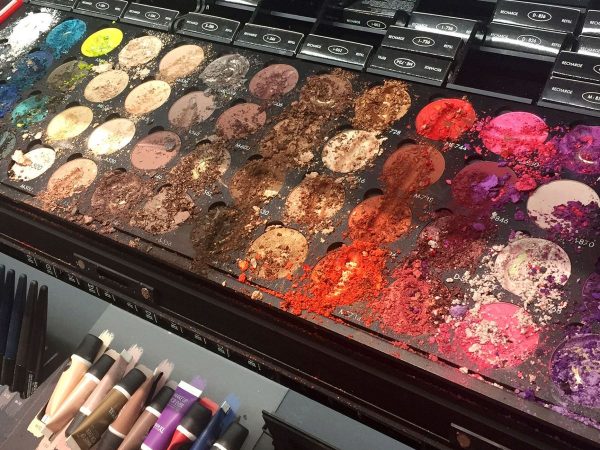You Become What You Scroll Through: How to Use Social Media Productively

https://dailytrojan.com/2018/10/16/internet-cultured-social-media-use-is-about-balance/
“You are what you eat.” This commonly heard phrase alludes to the effects of diet on overall well-being. The saying applies to not just food, but everything we put into our body and mind, including media consumption. The negative influence of social media on a person’s well-being is widely accepted: increased distractions, exposure to bullying, and unrealistic expectations which are linked to symptoms of anxiety and depression. Given that the apps’ use is mainly from youth and students, with 45.3% of the social media demographic being ages 13-29, the toll it takes on teens is worrisome. Oftentimes, adults assert that teens should solely decrease their screen time, yet that is an unrealistic oversimplification. The real problem is not just how much time teens spend on these platforms, but what type of content they are consuming. If you are always occupying yourself with mind-numbing entertainment or obsessed with current trends and others’ lives, then the quality of your life will decrease. That being said, younger generations should utilize these platforms to prioritize more positive and productive content. To do so, they should implement three steps: 1. Decrease screen time, 2. Assess and delete which platforms are most damaging, 3. Intentionally curate content to their goals or passions.
Although decreased social media usage will undeniably discourage the effects of these apps, there is a small chance teens can completely eliminate screen time. On average, ages 13-18 spend seven hours and 22 minutes daily on their devices, most of that time being on a social media platform. Implying that students can decrease their time spent on their phone from an entire night’s sleep to close to zero is unlikely. Nonetheless, they should still try to limit their screen time the best they can. The Mayo Clinic Health System insists that two hours per day for ages 13+ is an “acceptable amount.” Doing so can alleviate physical (obesity or trouble sleeping) and mental (mood imbalances and feelings of loneliness, insecurity, or depression/anxiety) symptoms from social media. Still, the time teenagers spend on social media will be harmful, so more should be done to mitigate the systemic impact of these platforms.
A platform’s design dictates the content you consume. TikTok and Instagram are two of the most active social media platforms for youth. Altogether, the two apps have 2.3 billion users. Meaning every day, around two billion people are scrolling and subconsciously being affected by the content they absorb. While both apps’ algorithms are customized to the users’ interests, TikTok uses a more dangerous AI method. The app “grew to one billion users in about half the time that it took Instagram to grow.” This does not quite indicate success, but obsession: psychologists say “the personalized algorithm on TikTok may lead young people to get addicted.” The algorithm evaluates old content a user has interacted with (liked, shared, etc.) combined with the trendiness factor (popularity) of a user or video. The objective of the app is that anyone’s videos can get famous, so the ‘ForYou’ feature prioritizes new content for different videos to circulate and go viral. The posts’ format is short videos, usually memes, dances, or comedic routines. All of which aim towards entertainment and keep you scrolling. Therefore, the app’s intention towards viewership, rather than teaching or motivation, counter-acts its potential to be useful.
While TikTok’s model is casual (funny videos, candid clips, small edits), Instagram has more curated or high-quality (longer, better visuals, more thorough) content; this is both positive and negative. The negative is that it can be discouraging to see curated posts from friends or famous individuals living lavishly. On the other hand, there are more positive influencers or organizations that develop content for knowledge and growth. Adding on, Instagram provides content aligned with accounts you are already following, while TikTok promotes new content. If you are creating content—to monetize or get famous off of—this benefits TikTok. But in terms of well-being, Instagram’s method is better. By assessing a user’s following, it becomes easier to redirect your content. Simply put, Instagram gives more control to the user. In these regards, Instagram is an ideal app, compared to TikTok, because it promotes valuable content over amusement.
The same goes for other apps like Snapchat, Twitter, etc. The apps that you feel susceptible to uncontrollable content or prioritize entertainment derive your well-being because they give you unhealthy dopamine fixes. Dr. Nia Williams of Bangor University summarizes, “TikTok becomes addictive because it releases dopamine into the brain, making you feel good.” This dopamine fix is categorized as an unhealthy stimulus, threatening the body’s integrity. People are supposed to get dopamine from sleep, exercise, sun, or a healthy diet, not a constant overload of entertainment. By overdosing on false dopamine from scrolling, attention spans lessen, and your normal dopamine levels rise, so mundane events, like laying in bed or walking alone, become boring. Then, you constantly search for higher dopamine fixes to make you happy. It’s like a drug. Adding on, as you scroll for hours, you are likely to see several discouraging posts. As USC professor and author Dr. Julie Albright puts it, “sometimes you win, sometimes you lose.” In other words, “sometimes you see something you like, and sometimes you don’t,” but you stay engaged despite the negativity. So, delete these apps that are addictive and unproductive. That does not mean deleting all social media, but the apps that are discouraging your energy and supplying unhealthy dopamine.
For this to work, a user has to intentionally avoid damaging content on the apps they do keep. So, do not follow the celebrity that sets unrealistic body standards, or don’t constantly search up your ex’s profile and stalk it. Instead, to become more stable and less influenced by social media, teenagers should follow productive accounts. Imagine if, instead of spending your time evaluating others’ lives, you devoted your content to your goals. If you are going through periods of self-doubt, follow @happinessproject, an account that posts daily affirmations and health tips. If you are interested in being involved in activism, follow @theprogressivists, a climate, civil, and racial justice resource. As the content on your following changes, so will the content the app displays to you on your feed or reals. More importantly, feel your mindset change. No longer will you be absorbed in others’ opinions or waste your time scrolling. Instead, each post can inspire you, teach you, and ultimately change you. Not only can manipulating your social media content mitigate its negative influences, but it can be a tool for accomplishing personal goals. If all the content you digest is full of encouragement and knowledge, then you become that passionate, knowledgeable person. If all you consume is related to your dreams, you will achieve your dreams. You become what you scroll through.
Hey everyone! My name is Sarah and this is my first year on staff. I’m so excited to be the editor for the sports section and get first-hand experience...











